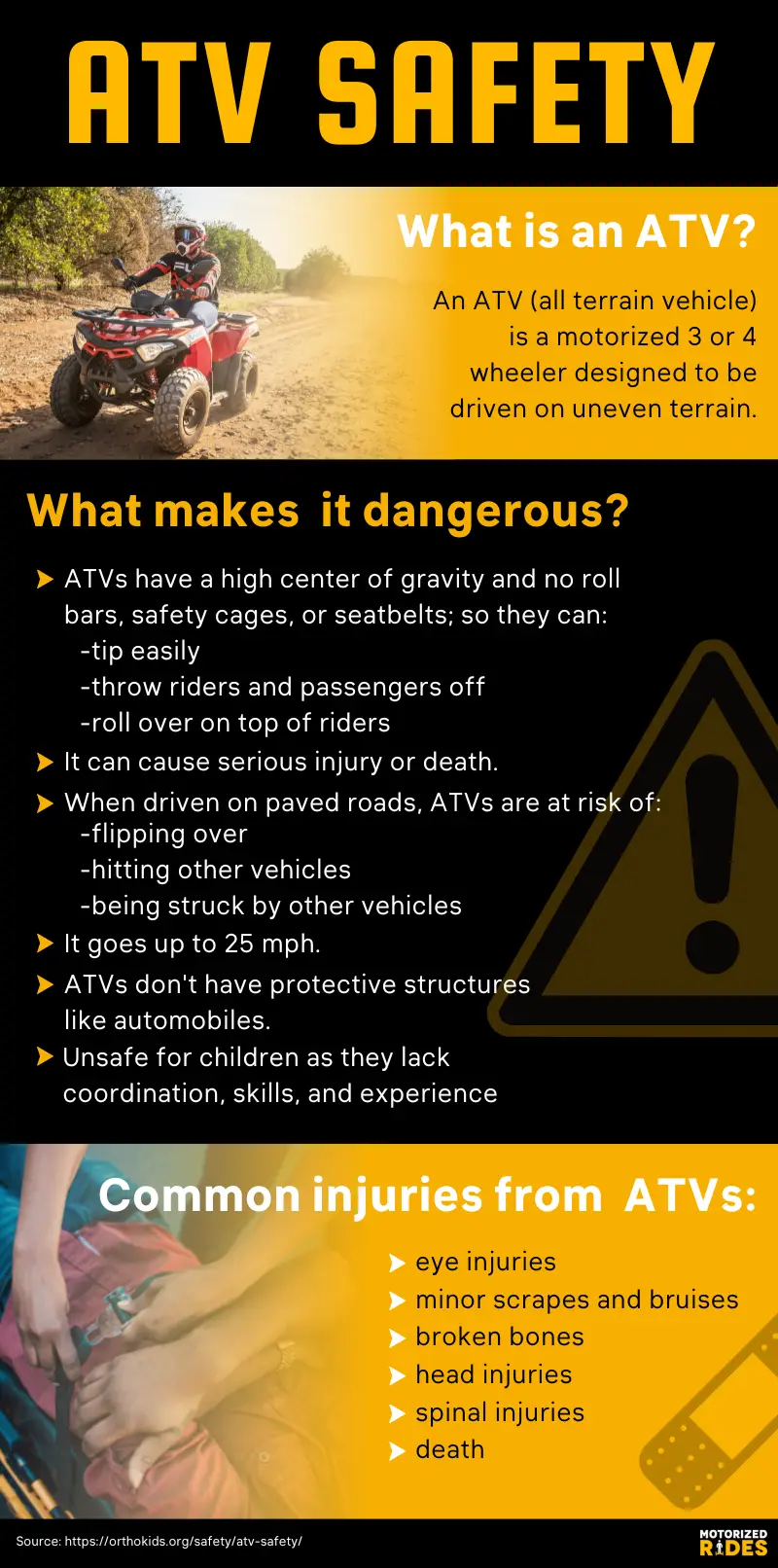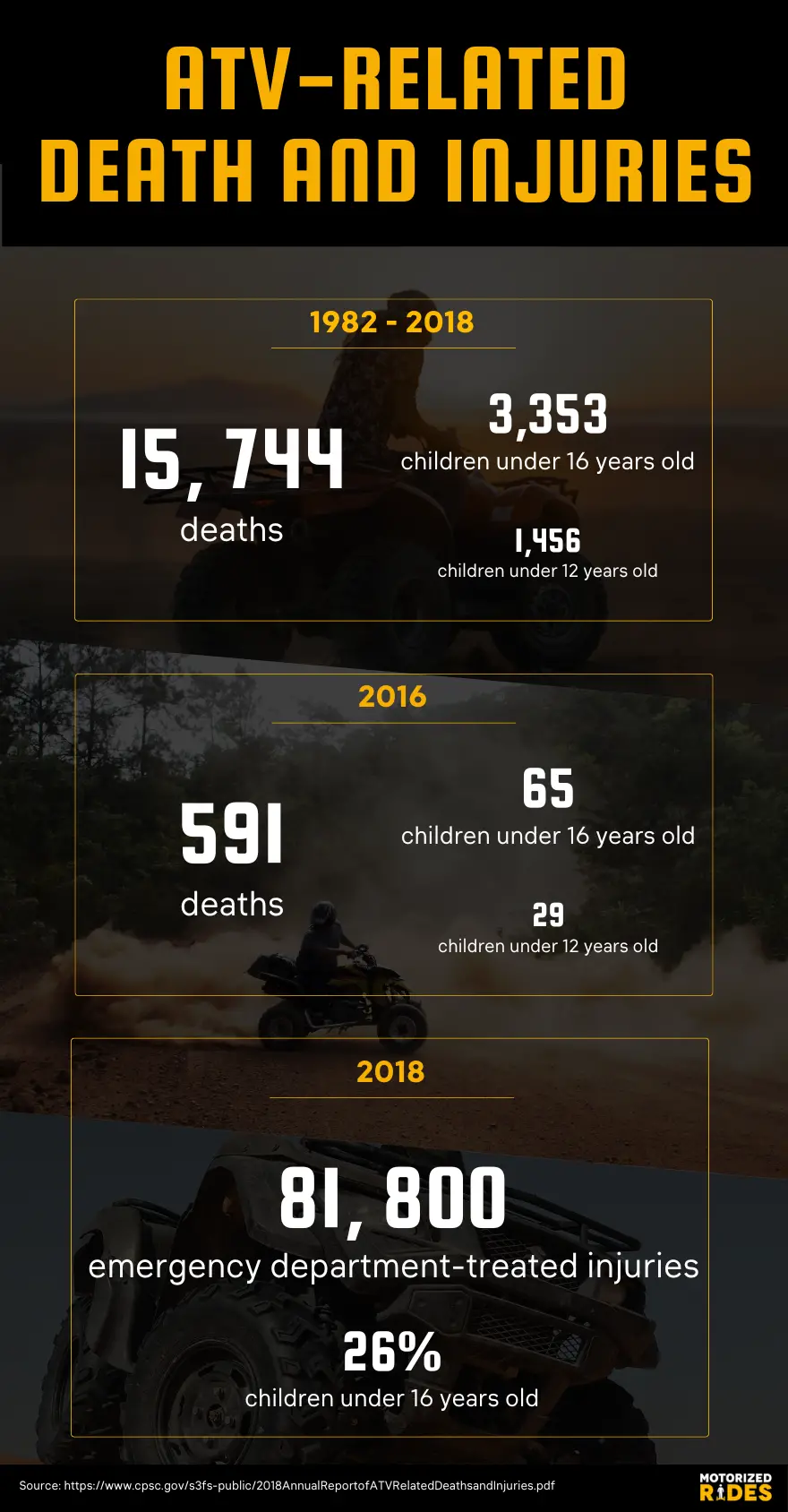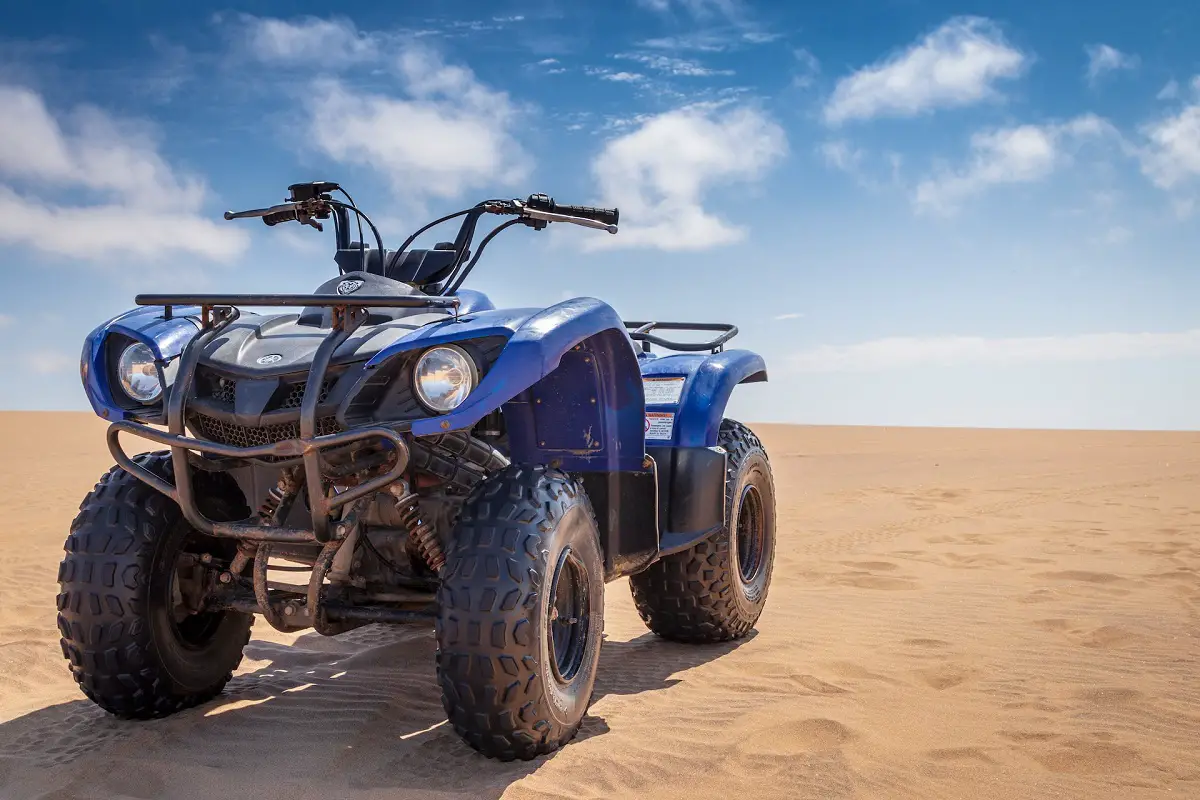While riding an ATV is exhilarating, it can also be dangerous if you aren’t taking the right precautions. The best way to have fun on an ATV is to exercise proper ATV safety so that you are protected from injuries caused by misuse.
Here are the top 10 most important safety tips to keep in mind while riding an ATV.
It’s essential for any ATV rider, regardless of age, to be equipped with suitable safety gear when riding an ATV. Helmets and eye protection are an absolute must. For ATV safety and riding, a helmet with proper face shields is the best choice for ATV safety equipment.
You should also consider wearing long pants to protect your legs and proper riding gloves that give the best grip so your hands don’t slip off while riding.
If you are brand-new to ATV riding and are feeling especially unsure of yourself, you can always take a riding course that physically trains you in all the right safety habits.
The ATV Safety Institute has a helpful checklist that can give you an idea of the sorts of things and ATV safety information that formal safety training will prepare you for.
To account for the different kinds of riders out there, you can choose from a variety of riding or safety classes that will be fitted to your age, level of experience, and whether you want a solo or family course.

ATVs are designed to be used in specific places only. While it might be tempting to use them in public parks or on public roads, this will only pose problems for bystanders and for yourself.
For one thing, ATVs can be loud and powerful, so in the event of an accident or crash, more damage than usual can be done if they are used on public roads. Additionally, ATVs are off-road vehicles primarily. While they can work on many kinds of terrain, they need a lot of open space to be used both safely and to their full potential.
Be sure to only use your ATV in secluded locations that have very few people or vehicles. ATVs can be knocked over easier than you might expect despite their size and weight, so make sure your riding terrain isn’t too unstable or chaotic.
Getting safety equipment for your ATV is a great way to make things feel safer. This is especially important for younger riders under the age of 16.
Safety flags for ATVs are a great addition for younger ATV riders. These flags stick several feet in the air and help make the ATV and the rider visible from many yards away. ATV safety flags ought to be a bright noticeable color that sticks out from the rest of the environment. Red is a popular choice but orange can work well too.
An ATV that has mirrors, reflectors, headlights, and taillights are also better rated when it comes to safety so you’ll probably be better off buying one that already has all these.
While this is one of those ATV safety tips that should go without saying, it’s also worth repeating: only use ATVs that properly match your own size and age.
This one applies more to inexperienced and younger riders. Teens and kids absolutely need to use ATVs that are smaller and less powerful. A kid using an adult-sized ATV is far less likely to be able to ride it in a safe and comfortable manner.

Test-driving is an important aspect of owning any kind of vehicle, and ATVs are no exception.
Before you take your ATV out on the road, you should get a basic feel for it in a comfortable environment before you start using it at full power. Get a sense of how you’re supposed to sit on it, get used to how the grip throttle feels, and also test the more fundamental aspects like its speed and acceleration.
You need to know how fast the ATV can start and how fast it can brake in order to ride it safely, let alone effectively.
Being proactive is definitely one of the most advanced ATV safety tips you can learn, and while it may seem like overkill to some, it will be invaluable to know some first aid in the event of an accident or injury.
Many ATVs have trunk storage spaces which makes a great place to keep a first-aid kit, bandages, hydrogen peroxide, or anything else you need to deal with major scrapes or bruises.
As fun as it sounds, riding after dark increases your odds of having an accident due to decreased visibility. It’s not completely off the table for experienced riders, but new ATV users should seriously stop riding when the sun starts to set.
You can mitigate this a little bit if your ATV has bright safety lights to help see the way better. Use your better judgment in this scenario, but to err on the side of caution, young or newer riders should only use their ATVs with adequate sunlight.
Many if not most regions around the world have ATV laws that need to be followed. The rules are numerous and are rarely the exact same, but they tend to be based on age usage, proper safety gear and equipment, and laws about where the ATV can be used. It’s practically a universal law of society that ATVs cannot be used on highways, for example.
Look into your city or state’s laws on ATV riding and make sure you memorize them or prepare for all of them before you even begin going on your first off-road trek.

While your standard ATV is built tough, everything succumbs after enough use. That’s why it’s important to keep an eye on your ATV’s health and condition. Keeping it in good shape prevents the odds of it failing on you in the middle of a ride, which also prevents the odds of you having a major accident or injury occur out of nowhere.
You could be doing everything fine and riding with perfect form, but it’s not going to matter if your ATV is on the verge of collapsing from underneath.
As long as you keep all 10 of these ATV safety tips in mind, you’re guaranteed to make your ATV riding not only safer but more enjoyable as well. They say information is power, which makes ATV safety information especially powerful.